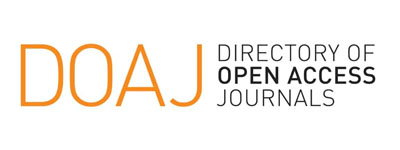Water Environmental Carrying Capacity for Activities of Intensive Shrimp Farm in Banyuputih Sub-District, Situbondo Regency
Abstract
This research was aimed to determine the width area of an intensive shrimp farm which can be supported by water environment of Banyuputih Sub-District, Situbondo Regency according to the water assimilation capacity towards the farm’s organic waste. We used survey method and secondary data collection from other researches or result report of relevant institution. This study was using two approaches of environmental carrying capacities, i.e. (1) quantitative method on available water volume in coast (coastal water) and (2) quantitative method on available Dissolved Oxygen (DO) in waste receiving water body of coastal water. The result showed that the utilization of coastal area for intensive shrimp farm activities in this study area is not exceeding its carrying capacity of water yet. Based on the analysis, the water environmental carrying capacity for the farm’s organic waste is 375.637 kg TSS. Organic waste (TSS) disposed from an intensive shrimp cultivation at the study area is 6.506 kg TSS.ha-1.MT-1. The width of intensive area which can be supported by Banyuputih Situbondo water environment is 58 ha. The width of available intensive pond area at study site is 113 ha, but only 39 ha is active/productive, the remaining 74 ha is inactive/unproductive area. If unproductive area will be re-operated/reactivated again, then we would recommend only 19 ha according to the water environment carrying capacity for the farm’s organic waste (58 ha). Estimation result of water environment carrying capacity for this organic waste of shrimp farm can be used as reference to determine the development or management threshold of sustainable pond area at this study site.
Â
Keywords: environment carrying capacity, organic waste, shrimp farmDownloads
Issue
Section
License
Authors who publish with this journal agree to the following terms:
- Authors retain copyright and grant the journal right of first publication with the work simultaneously licensed under a Creative Commons Attribution License that allows others to share the work with an acknowledgement of the work's authorship and initial publication in this journal.
- Authors are able to enter into separate, additional contractual arrangements for the non-exclusive distribution of the journal's published version of the work (e.g., post it to an institutional repository or publish it in a book), with an acknowledgement of its initial publication in this journal.
- Authors are permitted and encouraged to post their work online (e.g., in institutional repositories or on their website) prior to and during the submission process, as it can lead to productive exchanges, as well as earlier and greater citation of published work (See The Effect of Open Access).














